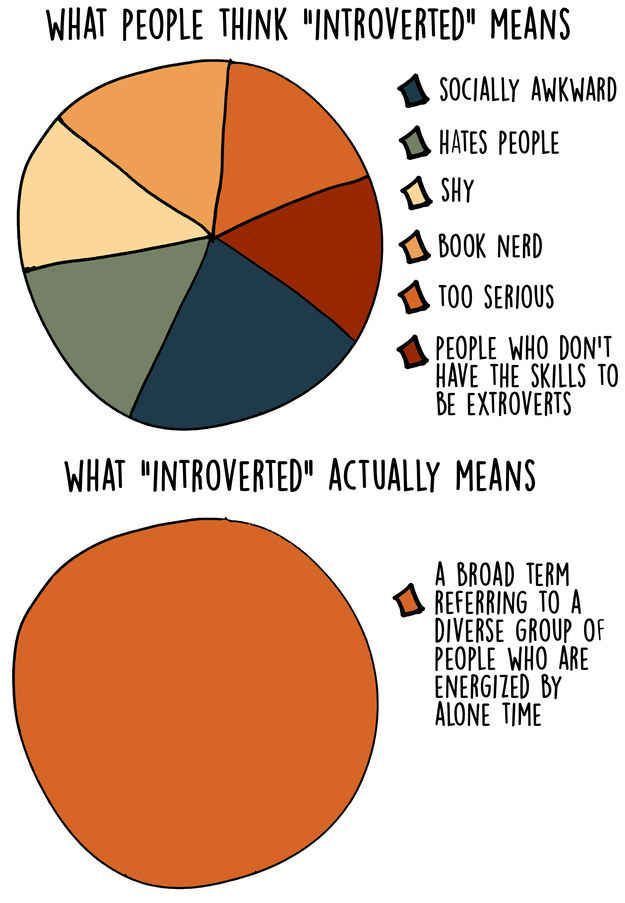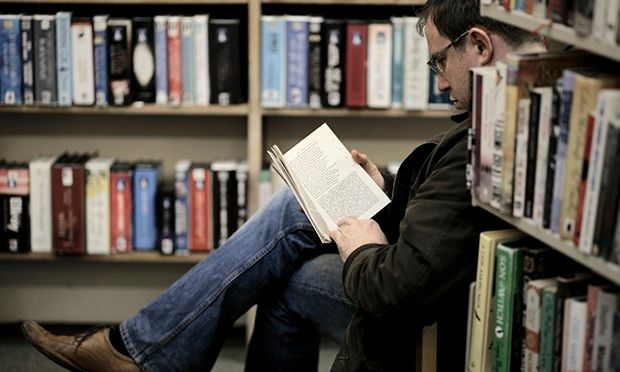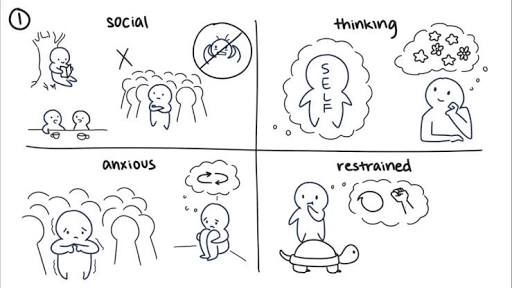The Four Kinds Of Introverts
May 25, 2019 • 81 views

The 2012 best seller Quiet, written by Susan Cain popularized the trait of introversion as a personality type, and not a kind of behavioral disorder, as was the popular opinion back then. Today, even the simpletons have heard about the word introvert, and many have an understanding of what it refers to. That, an introvert is a person who talks less, is basically thoughtful, a nerd, remains lost in his own mind-world, doesn't party, is shy, encloses himself in a shell and so on. But, apparently, this isn't the whole story.

When such stereotypical definitions of introversion started coming out, Jonathan Cheek, a psychology professor at Wellesley College, noticed some anomalies, that, there isn't any one type of introversion. Rather, introversion is an amalgamation of many types. That means, two persons identifying themselves as Introverts may not be all same, but, radically different!
Actually, this difference between the common and scientific definitions of introversion was identified as early as in the 1980s. Eventually, Cheek gave us the official pointers (till now just a paper, but better than the earlier ones and a basis for further investigations) - the four shades of introversion. And one introvert may belong to any of them, or even have traits belonging to many of them. These four shades are represented by the STAR acronym, given by Cheek -
S - Social Introversion
T - Thinking Introversion
A - Anxious Introversion
R - Restrained Introversion
Of course, the unifying principle of all these kinds is the tendency to turn inwards, rather than the outward attitude shown by extroverts. The brief description of the STAR is as follows :-
Social Introverts :

They prefer solitude; would rather stay alone with say a book, music, internet, etc. or would socialize in small groups. That's the clichéd definition of Introverts. But , one shouldn't confuse them to be shy or socially anxious. Because, their choice for solitude is basically them recharging themselves, as being around people can drain them - mentally, emotionally and sometimes even physically.
Thinking Introverts :

These are the introspective day-dreamers. Hence, they wouldn't be averse to large social gatherings, but are capable of getting lost in the mental simulations of their imaginations. As Cheek quoted, "they're capable of getting lost in an internal fantasy world , but not in a neurotic way, it's in an imaginative and creative way." Like, our lovely Luna Lovegood from the Harry Potter series, dreamy and self-reflective with a vivid imagination.
Anxious Introverts :

These, unlike the Social Introverts, seek solitude because of their anxiety, which normally doesn't fade away even while they're alone. They are highly self-conscious and face awkwardness while dealing with things, because of their low self-confidence. Hence, they're easy to manipulate. This kind of introversion is defined by a tendency to ruminate, to turn over and over in their minds the things that might or could or already have gone terribly wrong. Proper therapy can be used to enhance the faith in oneself and come out of this shade.
Restrained Introverts :

They are basically the reserved ones, gelling up with strangers at a slow pace and taking their own sweet time to think before acting or speaking anything. These are rather observant people, who take time to warm up to people or allow others to know them . But once this happens, it's like boom! And they actually enjoy themselves with others without restraints.
There are various quizzes available online to find out what kind (s) of introversion you have. So, be sure to check them out. XOXO
